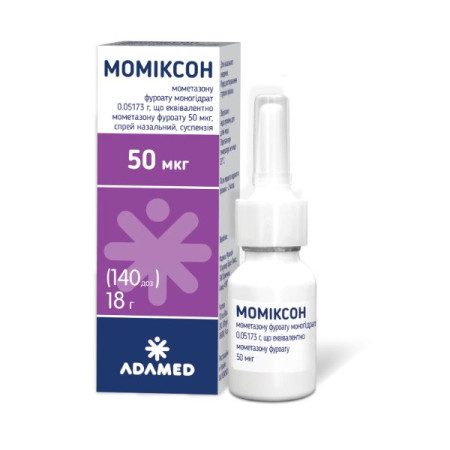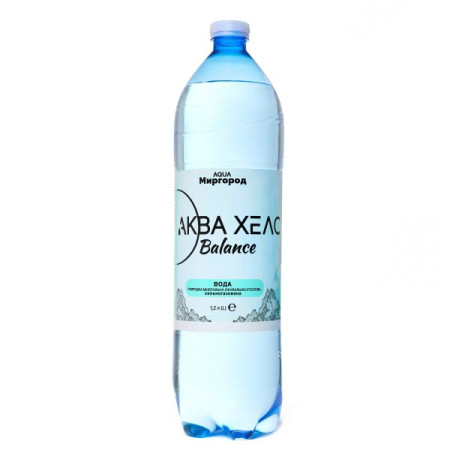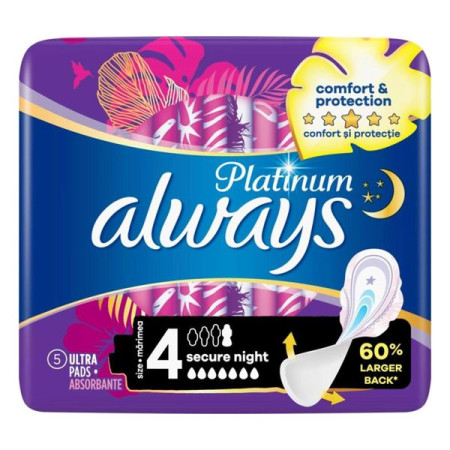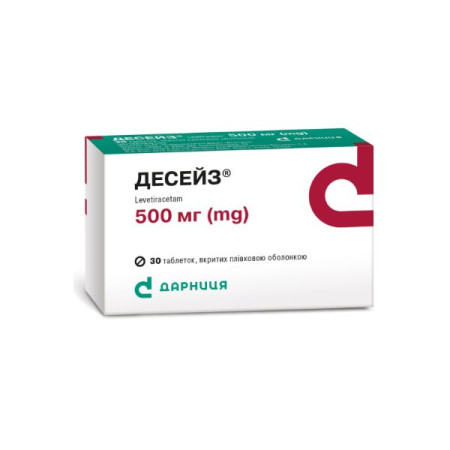Duloxent hard enteric-coated capsules 30 mg blister No. 30
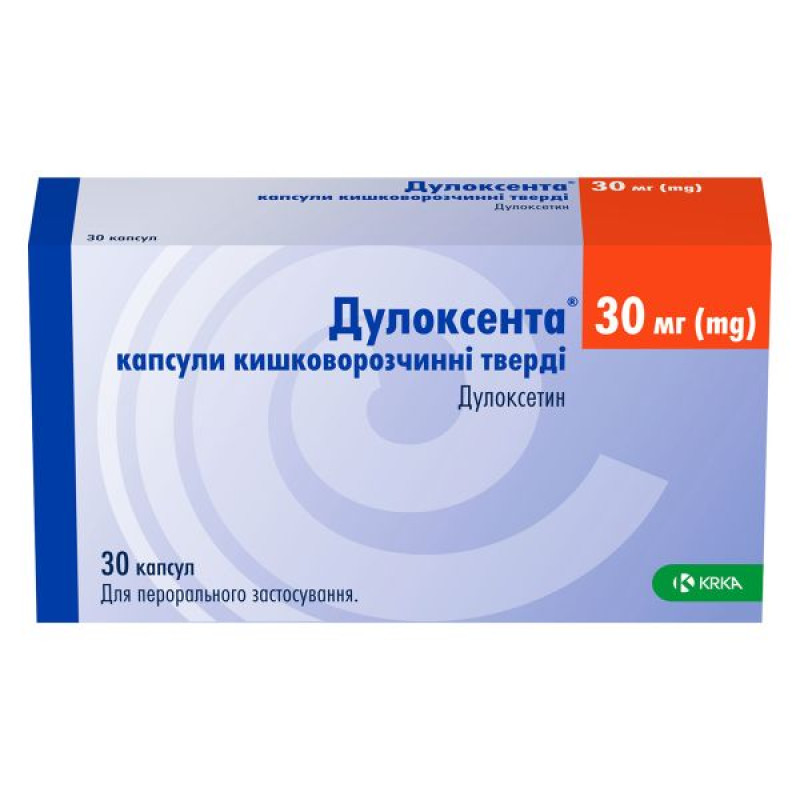
Instructions for Duloxent hard enteric-coated capsules 30 mg blister No. 30
Indications for use
- Treatment of major depressive disorder.
- Treatment of diabetic peripheral neuropathic pain.
- Treatment of generalized anxiety disorder.
- Duloxetine® is indicated for adults.
Composition
- active ingredient: duloxetine hydrochloride;
- 1 hard enteric-coated capsule contains 30 mg of duloxetine as duloxetine hydrochloride;
- excipients: spherical sugar (sucrose, corn starch), hypromellose, sucrose, hypromellose phthalate, talc, triethyl citrate;
- capsule shell for 30 mg dosage: titanium dioxide (E 171), indigotine (E 132), gelatin, printing ink (shellac, black iron oxide (E 172)).
Contraindication
- A contraindication for the use of the drug is hypersensitivity to duloxetine or to any of the drug's excipients.
- Duloxetine should not be administered with non-selective, irreversible monoamine oxidase inhibitors (MAOIs).
- Duloxetine should not be prescribed to patients with liver disease, as it may cause liver failure.
- Duloxetine should not be administered in combination with fluvoxamine, ciprofloxacin or enoxacin (strong CYP1A2 inhibitors) due to increased plasma concentrations of duloxetine.
- Duloxetine should not be prescribed to patients with end-stage renal disease (creatinine clearance <30 mL/min).
- Duloxetine should not be prescribed to patients with unstable hypertension, as it may precipitate a hypertensive crisis.
Adverse reactions
The most common adverse reactions in patients treated with duloxetine were nausea, headache, dry mouth, somnolence, and dizziness. However, most of the common adverse reactions were mild to moderate in severity, usually began early in therapy, and most tended to resolve even with continued therapy.
Method of application
For oral use.
In major depressive disorder, the initial and recommended maintenance dose of duloxetine is 60 mg once daily without regard to meals. Doses above 60 mg once daily may be increased to a maximum dose of 120 mg daily in divided doses. The feasibility of prescribing doses above 120 mg has not been systematically evaluated in terms of clinical data. However, there is no clinical data to suggest that dose escalation would be effective in patients who do not respond to the initial recommended dose.
The therapeutic effect of treatment is evident within 2–4 weeks.
After a sustained antidepressant effect, it is recommended to continue treatment for several months to avoid relapse. For patients who respond to duloxetine and have a history of recurrent major depressive episodes, further long-term treatment at a dose of 60-120 mg per day should be considered.
For generalized anxiety disorder, the recommended starting dose is 30 mg once daily with or without food. In patients with insufficient response, the dose should be increased to 60 mg, which is the usual maintenance dose for most patients.
For patients with comorbid major depressive disorder, the initial and maintenance dose is 60 mg once daily.
Doses up to 120 mg/day have been shown to be effective and have been evaluated for safety in clinical trials. Therefore, for patients who do not respond adequately to 60 mg, an increase in dose to 90 mg or 120 mg may be considered. Dose increases should be based on clinical response and tolerability.
After achieving a stable therapeutic effect, it is recommended to continue treatment for several months to avoid relapse.
Abrupt discontinuation of treatment should be avoided. After discontinuation of Duloxetine®, the dose should be gradually reduced over a period of at least one to two weeks to reduce the risk of withdrawal reactions. If intolerable symptoms occur after dose reduction or after discontinuation of treatment, resuming the previously prescribed dose may be considered. Your doctor may then continue to reduce the dose, but more gradually.
Application features
Use during pregnancy or breastfeeding.
Use of the drug during pregnancy is recommended only if the expected benefit outweighs the potential risk to the fetus. Women taking duloxetine should be advised to inform their doctor if they become pregnant or plan to become pregnant.
The safety of duloxetine in children is unknown, so breastfeeding while taking duloxetine is not recommended.
Children.
Clinical studies on the use of duloxetine in children have not been conducted, therefore it is not used in pediatric practice.
Studies on the effect of duloxetine on the speed of reaction when driving or using other mechanisms have not been conducted. Duloxenta® may cause sedation and dizziness. Patients should be informed that if they experience sedation or dizziness, they should refrain from potentially hazardous activities, such as driving or using other mechanisms.
Overdose
Large doses (up to 5400 mg) have been reported as monotherapy or in combination with other drugs. There have been some fatalities, mostly from mixed overdoses, but also with duloxetine alone at doses of approximately 1000 mg. Symptoms of overdose (duloxetine alone or in combination with other drugs) have included somnolence, coma, serotonin syndrome, seizures, vomiting, and tachycardia.
Specific antidotes are not known, and specific treatment (cyproheptadine and/or temperature control) is necessary if serotonin syndrome occurs. A patent airway should be checked. Cardiac monitoring and vital signs should be monitored, along with appropriate symptomatic and supportive measures. Gastric lavage may be appropriate if administered immediately after ingestion or for symptomatic purposes. Activated charcoal reduces absorption. Duloxetine has a large volume of distribution, so forced diuresis, hemoperfusion, and exchange perfusion are unlikely to be useful.
Storage conditions
Store at a temperature not exceeding 25 °C in the original packaging to protect from moisture.
Keep out of reach of children.
There are no reviews for this product.
There are no reviews for this product, be the first to leave your review.
No questions about this product, be the first and ask your question.




